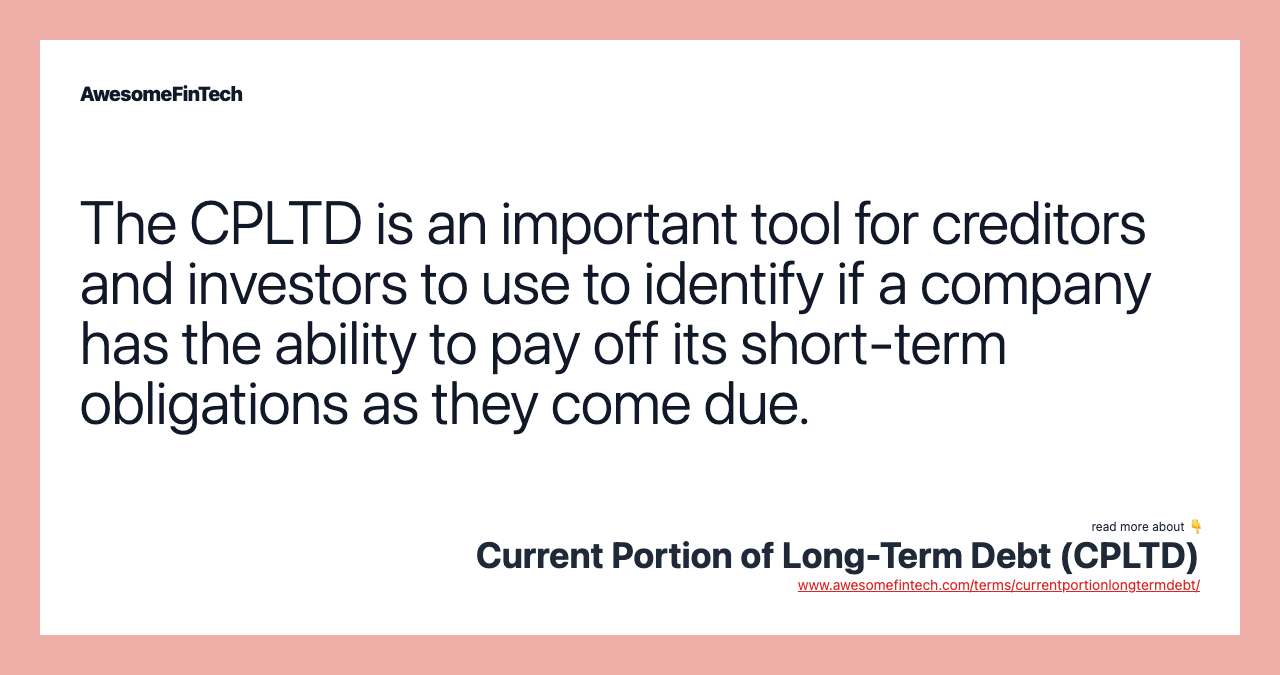What Is Long-Term Debt? Definition and Financial Accounting

These loans typically have 15 or 30 year terms, so the borrower won’t actually pay off the entire balance and retire the loan in the current period. Additionally, a liability that is coming due may be reported as a long-term liability if it has a corresponding long-term investment intended to be used as payment for the debt. However, the long-term investment must have sufficient funds to cover the debt.
Current Portion of Long Term Debt: Balance Sheet Example
The current portion of long-term debt is the portion of a long-term liability that is due in the current year. For example, a mortgage is a long-term debt because it is typically due over 15 to 30 years. They should be listed separately on the balance sheet because these liabilities must be covered with current assets. Sometimes it is easy to distinguish between long-term and current liabilities. For example, a long-term debt such as a mortgage would be treated as a long-term liability and recorded as such.
What Is the Formula for Calculating the Current Ratio?
Under IFRS Standards, no specific guidance exists when an otherwise noncurrent debt obligation includes a subjective acceleration clause. Classification of the liability is based on whether the debtor has an unconditional iowa capital gain deduction flowchart right to defer settlement of the liability at the reporting date. As observed in the graph above, the SeaDrill balance sheet doesn’t paint a good picture because its CPLTD has increased by 115% on a year-over-year basis.
Understanding Long-Term Liabilities

A company’s long-term debt can be compared to other economic measures to analyze its debt structure and financial leverage. A balance sheet presents a company’s assets, liabilities, and equity at a given date in time. The company’s assets are listed first, liabilities second, and equity third.
For example, startup ventures require substantial funds to get off the ground. This debt can take the form of promissory notes and serve to pay for startup costs such as payroll, development, IP legal fees, equipment, and marketing. Even though the loan isn’t paid off for many years, it still has a portion of the note that must be repaid each year. This is the current portion of the long-term debt– the amount of principle that must be repaid in the current year. Thus, the company has $0.50 in long term debt (LTD) for each dollar of assets owned. The rationale is that the core drivers are identical, so it would be unreasonable to not combine the two or attempt to project them separately.
- Long-term liabilities are also called long-term debt or noncurrent liabilities.
- In other words, SeaDrill has a high amount of current portion of long-term debt as compared to its liquidity, such as cash and cash equivalent.
- The rationale is that the core drivers are identical, so it would be unreasonable to not combine the two or attempt to project them separately.
- For example, a long-term debt such as a mortgage would be treated as a long-term liability and recorded as such.
- Debt expenses differ from depreciation expenses, which are usually scheduled with consideration for the matching principle.
To address questions raised about applying these amendments to debt with covenants, the IASB Board published further proposals, including to defer the effective date of the 2020 amendments to January 1, 2024. The proposed amendments would require that only covenants with which a debtor must comply on or before the reporting date would affect the liability’s classification. Covenants which a debtor must comply within 12 months from the reporting date would not affect classification of a liability as current or noncurrent. Instead, debtors would present separately, and disclose information about, noncurrent liabilities subject to such covenants. These proposals are being redeliberated, with final amendments expected to be issued in the last quarter of 2022.
The $200,000 loan has an interest rate of 5% and is amortized over 10 years. Using a loan payment calculator, this comes to a total monthly payment of $2,121.31. CFI is the global institution behind the financial modeling and valuation analyst FMVA® Designation. CFI is on a mission to enable anyone to be a great financial analyst and have a great career path.
A company with a high amount in its CPLTD and a relatively small cash position has a higher risk of default, or not paying back its debts on time. As a result, lenders may decide not to offer the company more credit, and investors may sell their shares. Let’s assume that a company has just borrowed $100,000 and signed a note requiring monthly payments of principal and interest for 48 months.



Không có bình luận